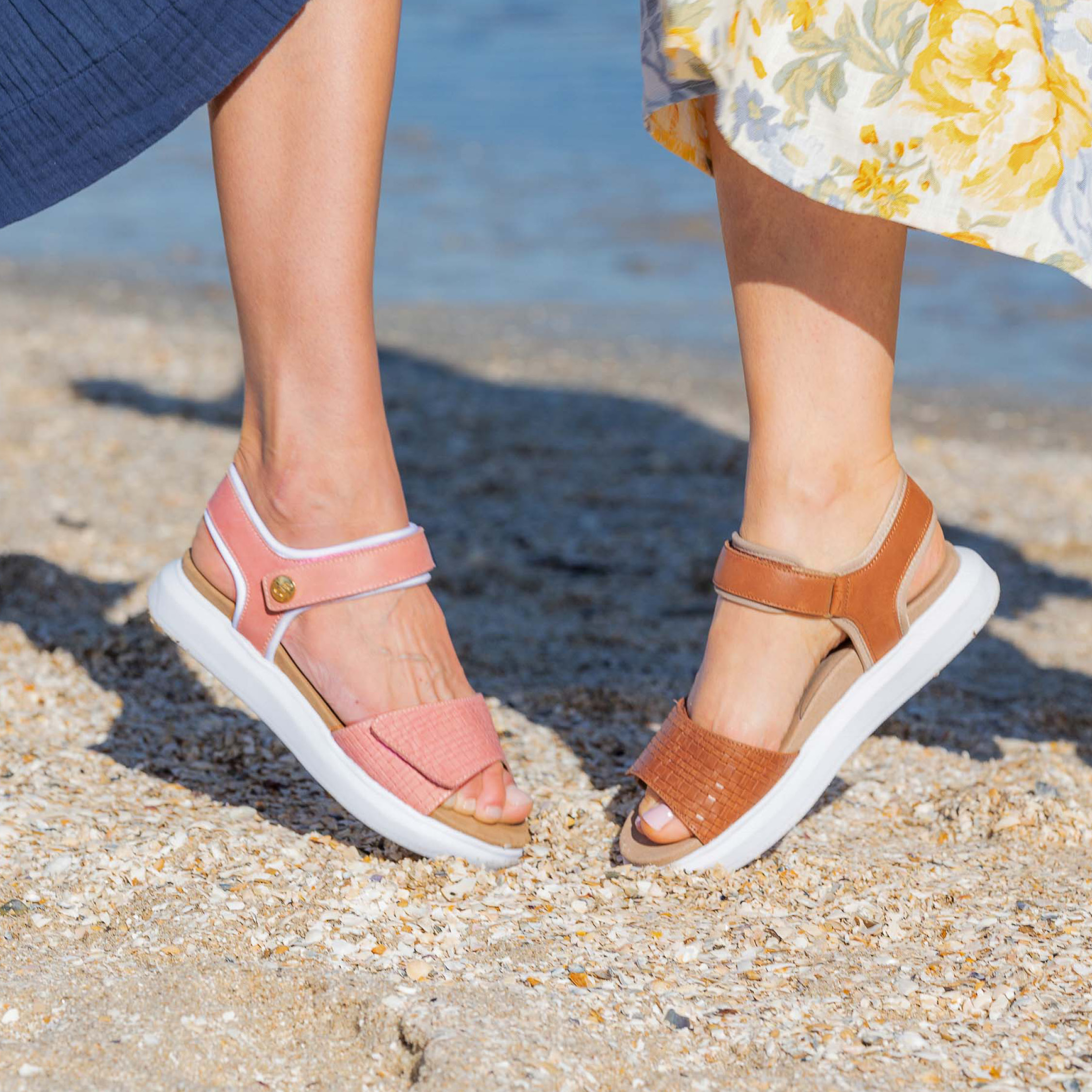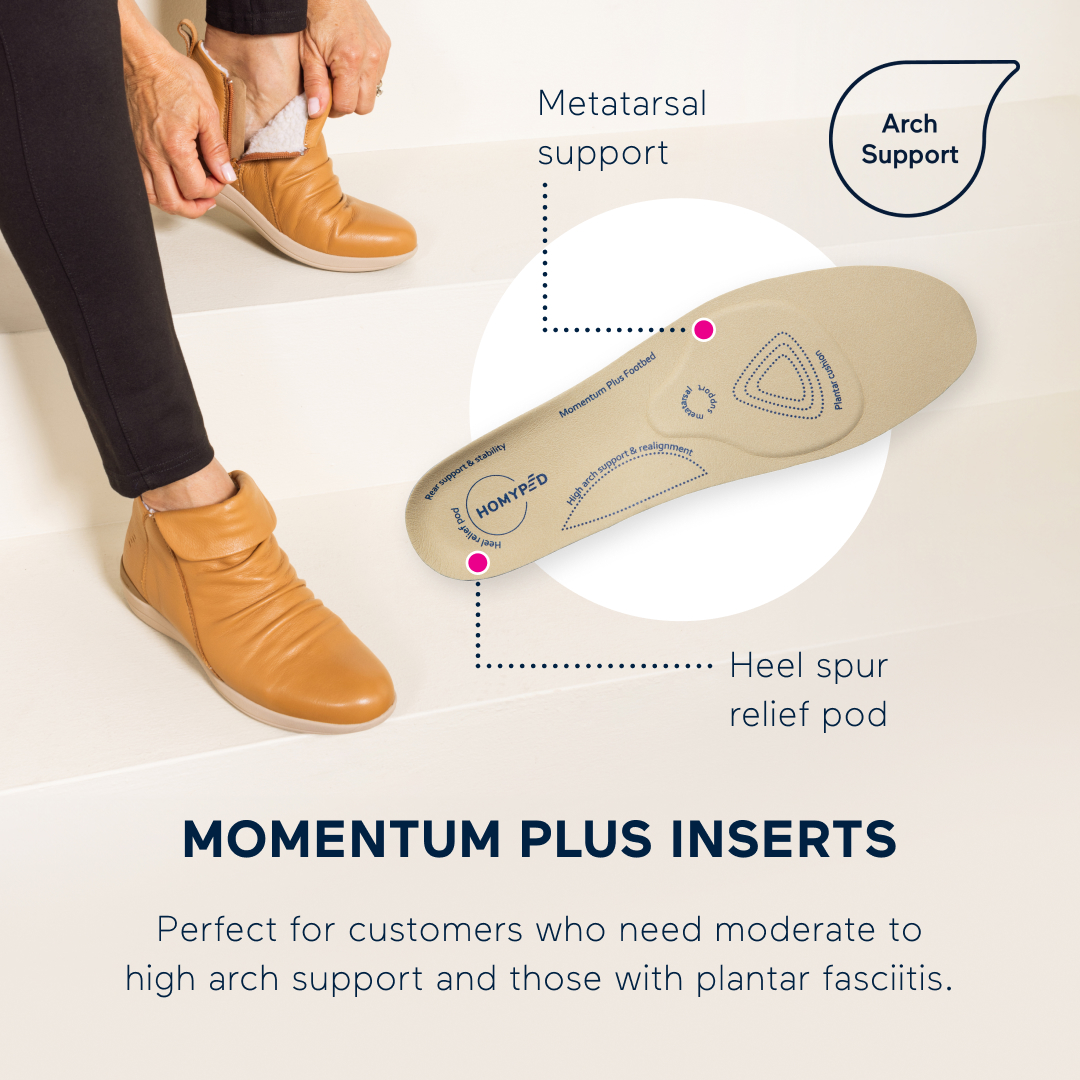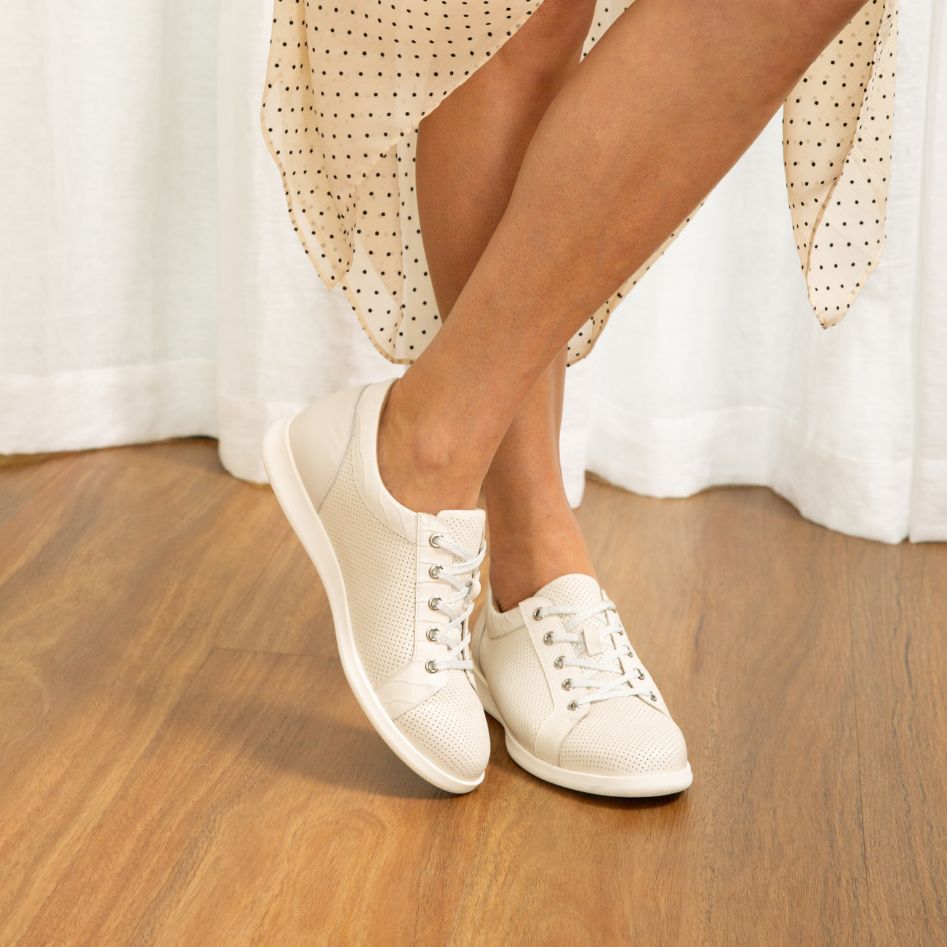Common foot conditions explained by our podiatrist
November 20, 2023

According to the Australian Podiatry Association, around 40 percent of Australians will experience some form of foot condition. We caught up with Homyped’s Podiatrist, Steve O'Connor, to discuss the most common foot conditions and how Homyped shoes may help.
Diabetes
Diabetes is a disease that happens when your blood glucose (also called blood sugar) is too high. Overtime, this disease may cause damage to the nerves in your feet (also known as peripheral neuropathy). This can cause tingling and pain, or loss of feeling in your feet so the ability to feel a blister or a pebble inside your shoe may not be possible, which may lead to cuts and sores, and is why it’s so important to wear correct and protective shoes with extra foot care and support.
“Poor circulation from this condition can lead to slower healing and nerve damage,” adds Steve. “I recommend that all people with diabetes should have their feet checked at least once a year to ensure early detection of problems and to prevent ulcers.” Diabetic shoes can have a life-changing impact on relieving pain, alleviating pressure and maximizing comfort in the feet.
Arthritis
Arthritis, such as osteoarthritis, occurs when cartilage in the joints wears down and bones become exposed and rub against each other. This is common in the base of the big toe, which causes stiffness, also known as hallux rigidus.Over time your body will attempt to repair this by growing more bone, which can cause the joint of the big toe to change shape and form a bunion.
“Depending on the severity, a podiatrist may provide shoe modifications, padding, or orthotics to relieve pain, while an orthopaedic foot surgeon may need to remove bony lumps or fuse the joint,” says Steve. Homyped have designed shoes that cater specifically for arthritis and have a fantastic range of footbeds that offer support and comfort in all the right places.
Plantar fasciitis
Plantar fasciitis is the overload and inflammation of the plantar fascia, the fatty pad that cushions the heel of your foot. Symptoms include severe pain in the heel after the first few steps out of bed in the morning, or when standing up after sitting for long periods of time.
“It can be caused by spending long hours on your feet, unsupportive shoes, low arches or obesity,” says Steve. “In severe cases, there can be an underlying inflammatory condition, bone disease, infection, stress fracture or nerve entrapment. Therefore it’s important to see a podiatrist to determine the underlying cause and an effective treatment.”
Shop shoes for plantar fasciitis

Heel spurs
Heel pain is one of the most common reasons patients will see a podiatrist. “If you notice tenderness or heel pain when you’re walking or simply standing, you may have heel spurs,” says Steve. “Heel spurs are a calcium deposit on the bottom of the calcaneus (heel bone) that is caused by chronic overstretching of the foot muscles and ligaments and the attendant strain on the plantar fascia. This causes painful inflammation of the soft tissue that spans from heel to toe.”
Heel spurs can be caused if you have been diagnosed with atypical posture or gait, are a runner or athlete, frequently wear high heels or are overweight. Whether you want to prevent heel spurs or are looking for relief, we have a range of styles that are antifatigue, provide cushioning, stability and the right support.
Shop shoes for Heel Spurs
Swollen feet
There are many potential causes of foot, leg and ankle swelling, and it can occur on one or both sides. Many lifestyle factors can cause swelling, including weight, or sitting or standing for long periods of time.
If you are regularly getting swollen feet, it’s important to check in with your GP or podiatrist. No matter what activities you are undertaking, there is a supportive, comfortable Homyped option for you to help minimise and ease swollen feet.
Shop shoes for swollen feet
Bunions
A bunion is a prominent bump on the inside of the foot around the big toe joint and is one of the most common forefoot problems. According to Orthopaedics360, approximately 75% of Australians over the age of 18 have bunions. It tends to be more common in females, and they often develop as we get a little older.
Homyped has a range of fashionble styles with soft bunion-friendly zones, targeted cushioning, and wiggle room for your toes.
Shop shoes for bunions

Other common foot conditions
Problematic toenails
“A podiatrist should be the first point of call for conditions such as nail thickening, shedding, discolouration, ingrown or involuted nails,” says Steve. "Nail conditions can be the result of acute trauma, such as stubbing your toe, chronic trauma, such as ill-fitting footwear, aggressive pedicures, or fungal infections often caused by moist or wet conditions. These can be extremely painful and lead infection if left untreated.
Falls prevention
“Foot problems are a major cause of falls, particularly for people over the age of 65,” says Steve. “Podiatrists have an important role to play in reducing the risk of falls by identifying and correcting underlying and gait abnormalities, assessing and treating foot pain, nail care, prescribing exercise programs, orthotics and advising on footwear.”
Ankle sprains
An ankle sprain is where there is a partial or complete tear of the ligaments in the ankle due to a sudden stretching. It typically occurs when the ankle is twisted suddenly in a sports activity or when stepping off an uneven surface.
“A podiatrist can assess the damage and strap, brace or immobilise the ankle where required,” says Steve. “Mild sprains often require rest and ice packs to reduce the swelling, but more serious tears can require orthopaedic surgery.”
Pronation
Pronation is the way the foot rolls inwards as you walk or run. When your foot strikes the ground, it rolls inward, and the arch flattens to absorb the shock. “Although pronation is a natural movement for impact distribution, some people roll inward too much (overpronators) or not enough (supinators), which can cause issues if left uncorrected,” says Steve. “A podiatrist can prescribe treatments such as orthotics to bring the joints of the foot back into position and help alleviate symptoms of discomfort.”
Smarter Shoes for better health
Since 1969, Homyped has been designing supportive and comfortable shoes and slippers that feature various footbeds, widths and benefits. We create smarter shoes for better health, targeting common foot conditions such as plantar fasciitis, bunions and heel spurs. We passionately engineer footwear in collaboration with allied health professionals and want to help you find your perfect pair. Shop by common foot condition today here.









